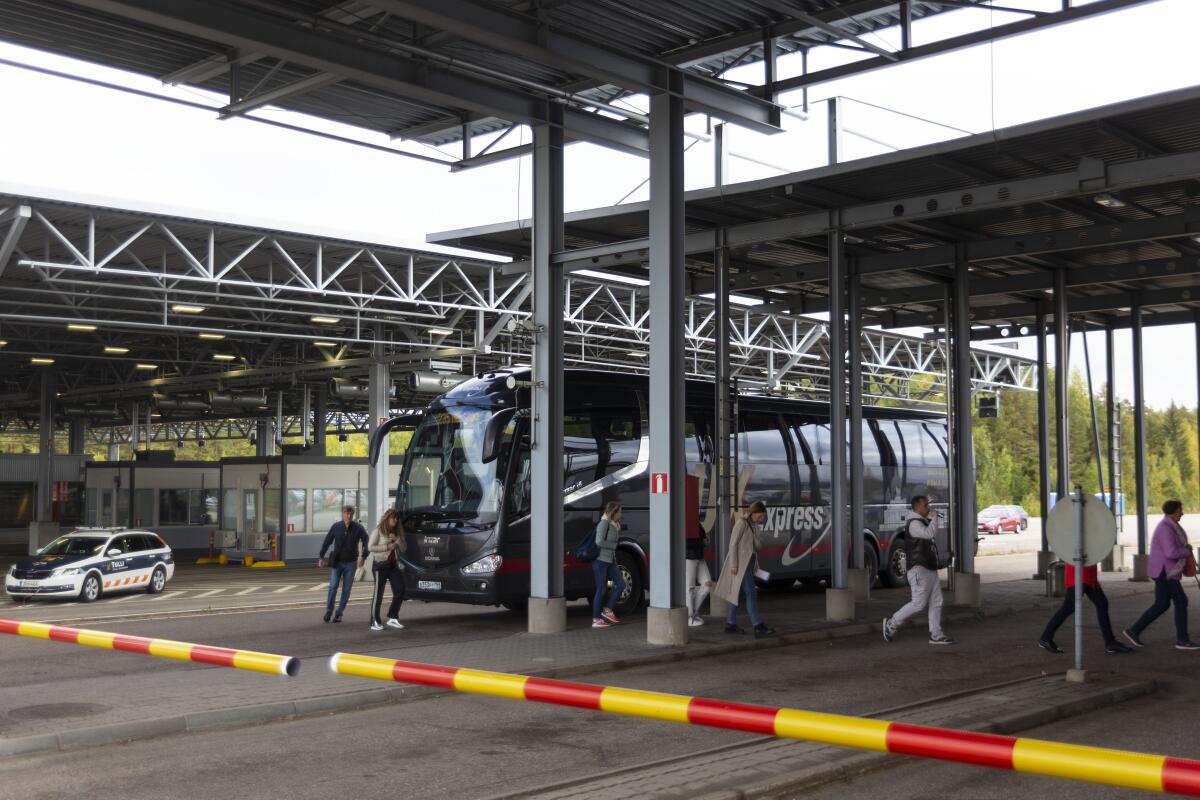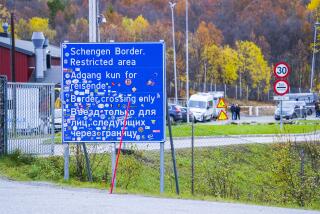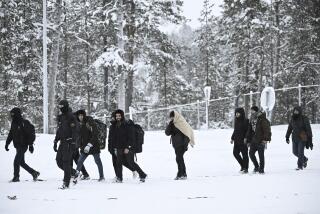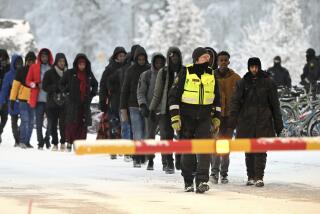Finland to start building fence on Russian border next year

- Share via
HELSINKI — Construction of a planned barbed-wired fence along Finland’s long border with Russia will start early next year, Finnish border guard officials said Friday, amid concerns in the Nordic country over the changing security environment in Europe.
The initial 1.8-mile stretch of the fence will be erected at a crossing point in the eastern town of Imatra by next summer. It will eventually extend to a maximum of 124 miles.
Finland’s 832-mile border with Russia is the longest of any European Union member.
In October, Finnish Prime Minister Sanna Marin said there was consensus among lawmakers to build a fence to cover parts of the border with Russia in a project that is estimated to cost $393 million and scheduled to be completed by 2026.
According to Marin, the fence’s main purpose would be to help border guards monitor and prevent possible large-scale illegal migration.
Her government hasn’t publicly cited Russia’s war in Ukraine or Finland’s decision to join the North Atlantic Treaty Organization as a reason to build a fence. But Helsinki is concerned over developments both in Russia and Ukraine, as well Moscow’s threats of retaliation as Finland joins the military alliance.
Politicians and experts have said it is not sensible — or even possible — to erect a fence along the entire length of Finland’s long eastern frontier that runs mainly through thick forests. In some places the Finnish-Russian border is marked only by wooden posts with low fences meant to stop stray cattle.
The fence, initially proposed by the Finnish Border Guard, is set to be built in stages, ranging from 3 miles to 32 miles.
It would be erected mainly in southeastern Finland, where most border traffic to and from Russia takes place, but short sections would also be built in the northern Karelia region and the Lapland region in the Arctic.
Col. Vesa Blomqvist, Border Guard commander in southeastern Finland, said that once completed, the fence will significantly bolster border control.
“The fence gives border guard patrols more reaction time by revealing movement of people and preventing, slowing down and directing movement,” Blomqvist said in a statement.
The fence will be 10 feet high with a barbed-wire extension on top. Apart from extensive patrolling, the Finnish Border Guard currently uses electronic and other devices to monitor border activity.
More to Read
Sign up for Essential California
The most important California stories and recommendations in your inbox every morning.
You may occasionally receive promotional content from the Los Angeles Times.










